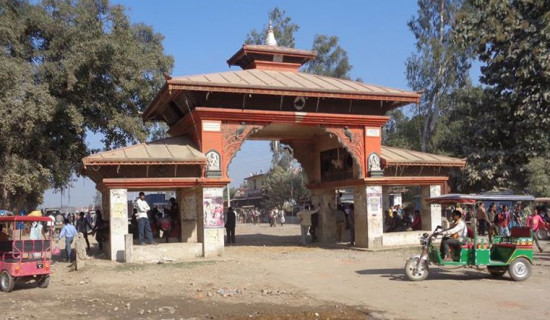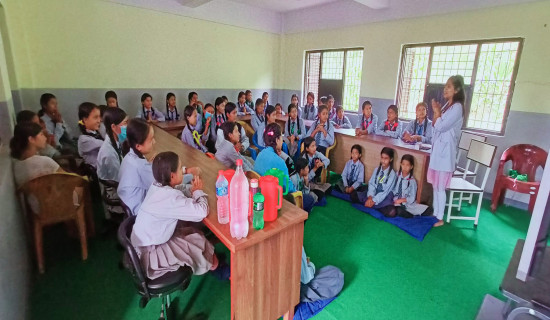- Wednesday, 24 April 2024
Former hunters now engaged in red panda protection
By Radha Luitel,Phidim, Dec. 5: The members of community forests, who once hunted wild animals in the highlands of Panchthar, Ilam and Taplejung districts of Province 1, have recently come forth with their anti-poaching activities.
Since the locals began conserving wild life, more red pandas have started appearing in the high mountains of Ilam and Taplejung distrcits, which border with India. The condition in Yangwarak and Phalelung of Panchthar district, which border Sikkim of India.
With the introduction of community-based conservation programmes in these districts in partnership with government, non-government and local associations, endanger wildlife has been protected.
“Sighting wild animals including red pandas had been rare in the surrounding areas after the construction of roads, but nowadays the animals are seen sporadically,” Tej Bahadur Begha, 77, of Imtimbu inYangwarak-1, said.
According to Begha, until about 50 years ago, there were enough red pandas in the forest where Nigalo and Malingo (Himalayacalamus asper) were found around Chiwabhanjang in Yangwarak.
Begha also said that the Red Panda Network for panda conservation launched a community-based conservation programme in collaboration with Panchthar’s Deep Jyoti Yuva Club, Ilam’s High Mountain Herbal Producer Organization, Ilam and Himalayan Conservation Forum Taplejung, the local community has become aware that such wild animals should not be hunted.
Sunil Bantawa, the Executive Director of the Deep Jyoti Youth Club, which is working in conservation in Panchthar, said that the Club has been conducting activities related to conservation education for the residents under the conservation programme.
According to him, together with the local levels and the education offices of the area where the community-based conservation programme has been implemented, a textbook has been created on the subject of red pandas and is being taught in schools in the conservation area.
Along with this, first-aid training, necessary materials and the essential equipment for the forest guards are being provided. The guards who used to be involved in smuggling in the past are also engaged in conservation, Bantawa said.
Before the implementation of the community-based conservation programme, there was a negative attitude towards red pandas. People used to take advantage of the shy mammals and some used to kill them for their body parts, but now it has stopped,” said Ramesh Rai, Forest Manager of Kanyadevi Community Forest Users Group.
According to studies conducted by Red Panda Network, they are found in Myanmar, India, Bhutan and China along with Nepal. Its population worldwide is less than 10,000.
The number of red pandas is expected to be around 1,000 in 24 highland and Himalayan districts of Nepal. According to a study conducted a decade ago, they were found in three districts – Panchthar, Ilam and Taplejung within 650 square kilometres. Taplejung is the district with the largest population of the red pandas.
Lately, since transportation services have reached remote areas, fragmentation of habitats, destruction of their abode by traditional animal husbandry systems, attacks by domesticated dogs, deforestation of Himalayacalamus asper, illegal trade, traps for other animals, and forest fires have led to decline in the population of red pandas, Pema Lamu Bhutia, said programme coordinator of Deep Jyoti Yuva Club.
The Government of Nepal has made a five-year action plan for the conservation of red pandas from 2019 to 2023. For the same programme, the government has been conducting conservation and research in partnership with national and international organizations. The red panda, which is also called Habre at the local level, has been listed as a protected animal by the government.




-square-thumb.jpg)











